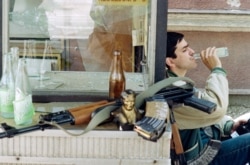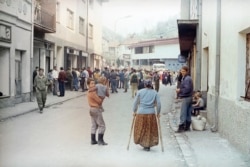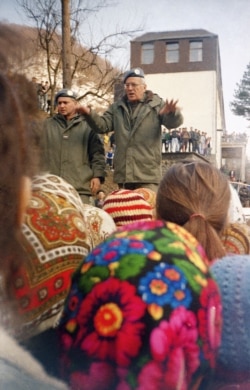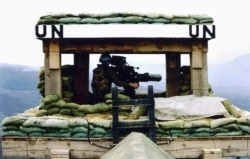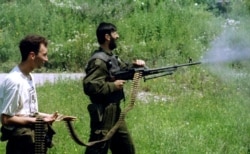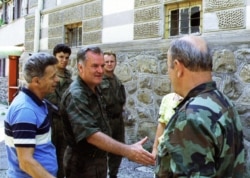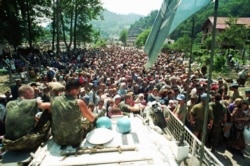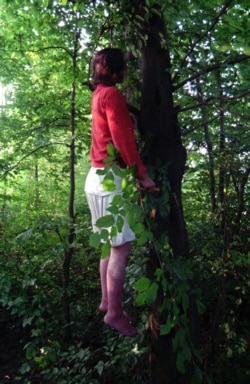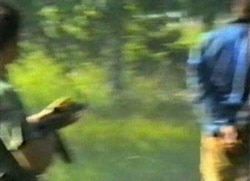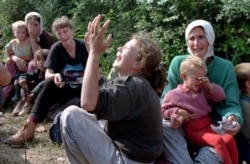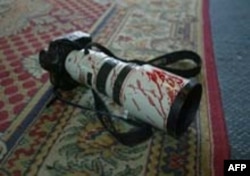
MOSCOW -- As Russians cast ballots in a tightly managed vote on constitutional changes that would pave the way for President Vladimir Putin to extend his rule until 2036, some of his critics warned the changes would usher in a clampdown on dissent and strengthen the hand of Russia's powerful security services.
Now, in Russia's capital, calls for protest by anti-government activists have capped off a week of raids, arrests, and prosecutions that appear to confirm those fears that the political landscape has changed in a way that makes opposition an even more costly enterprise.
"What's happening now is different, because it's part of a formal state doctrine," Yulia Galyamina, an opposition politician who was targeted in one of the recent raids, told RFE/RL. "The regime is now officially positioning itself as a dictatorship."
Events unfolded in rapid succession. On July 6, journalist Svetlana Prokopyeva was convicted in Pskov of justifying terrorism, after more than a dozen fellow reporters were detained for picketing in her support.
The following morning, members of Russia's security services bundled former military reporter Ivan Safronov into a car in central Moscow and arrested him on treason charges that carry a maximum 20-year sentence. Another 27 people, many of them Safronov's former colleagues, were detained for picketing in his defense.
On July 8, authorities stormed the apartment of opposition activist Pyotr Verzilov and moved forward with a criminal case against him for allegedly failing to declare Canadian citizenship.
And on July 9, the homes of at least five other opposition activists were raided in Moscow. One thing connected them: All had campaigned against Putin's constitutional amendments, as part of a small but dogged drive to scupper the plan to extend his rule.
'Attacks On Freedom Of Expression'
"Russian authorities should immediately drop the charges against the protesters and other journalists and end attacks on freedom of expression," Human Rights Watch said in a statement condemning the arrests.
For some, it was an echo of another sweeping clampdown in Russia's capital last summer, when a series of protests against the conduct of local elections prompted a tough reaction from authorities and raids on the homes of opposition activists.
"This is yet another intimidation campaign," tweeted prominent Putin critic Aleksei Navalny, whose allies were among those swept up in this week's crackdown. "An effort to demoralize Putin's opponents and publicly punish anyone who protested his amendments."
But others suggested things are different this time.
For years, journalist Andrei Soldatov wrote in The Moscow Times, "it had been almost impossible to accuse journalists of treason or revealing state secrets." Now, he said, the agency was "applying its paranoid definition of espionage to journalists -- and is going out of its way to make sure everyone knows."
Ivan Pavlov, the lawyer representing Safronov, wrote in a Facebook post that the journalist's case is the first treason charge against a Russian reporter since the 1997-2001 prosecution of Grigory Pasko, whom Pavlov also defended. He implored fellow journalists to take a stand.
"A lot will depend on the way you react to this blow, including whether accusations of treason against journalists will become a trend in today's Russia," he wrote.
'Life Has Only Gotten Worse'
The reaction on social-media channels popular among the opposition has been loud and defiant. But on the streets -- where law enforcement actively polices public spaces and is quick to hustle away solo picketers, let alone rowdy crowds -- it has been muted.
Earlier this month, opposition activists petitioned the Moscow government for permission to hold a protest on July 15 against Putin's constitutional overhaul. But they were rebuffed on the grounds that certain anti-coronavirus lockdown measures continue, and large gatherings are still banned.
Galyamina, who sits on a Moscow district council, said this was merely an excuse. She cited the fact that the constitutional-changes vote dragged on for a week and involved millions of Russians visiting polling stations to cast ballots.
Instead of forging ahead with a banned rally, which could expose participants to a violent police crackdown, she has called on supporters to gather on the central Pushkin Square on July 15 and sign a petition demanding that the constitutional changes be reversed -- in particular, the clause allowing Putin to run again for two more six-year presidential terms.
"Putin's term limits have been reset," she wrote in a Facebook post on July 10.







